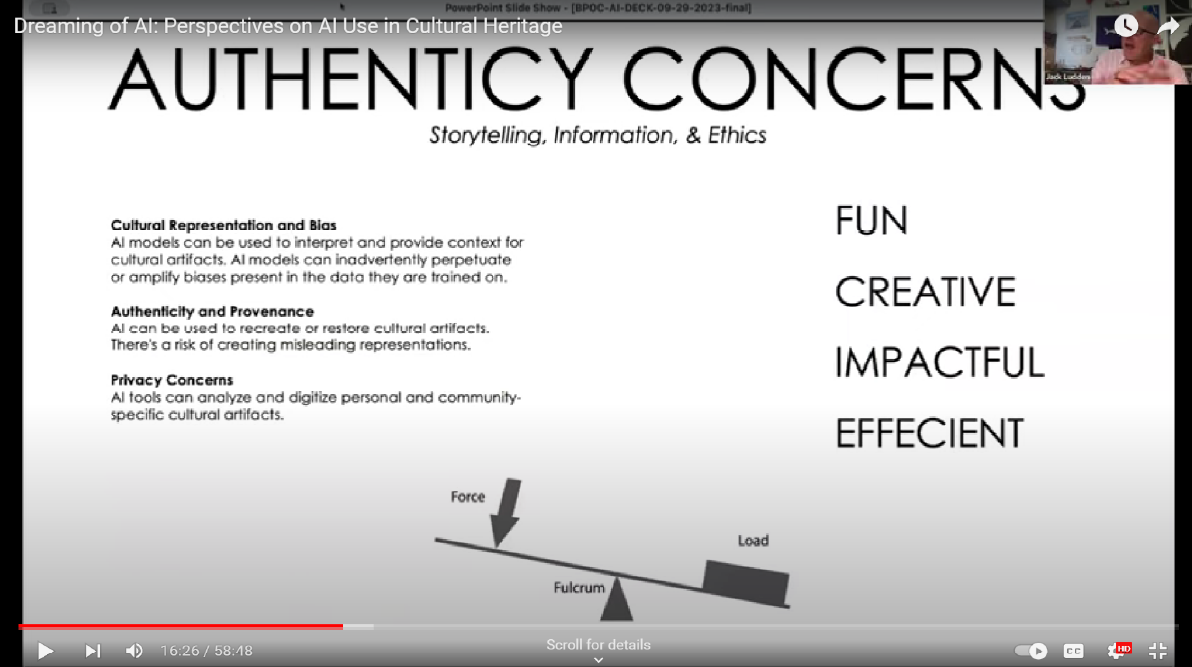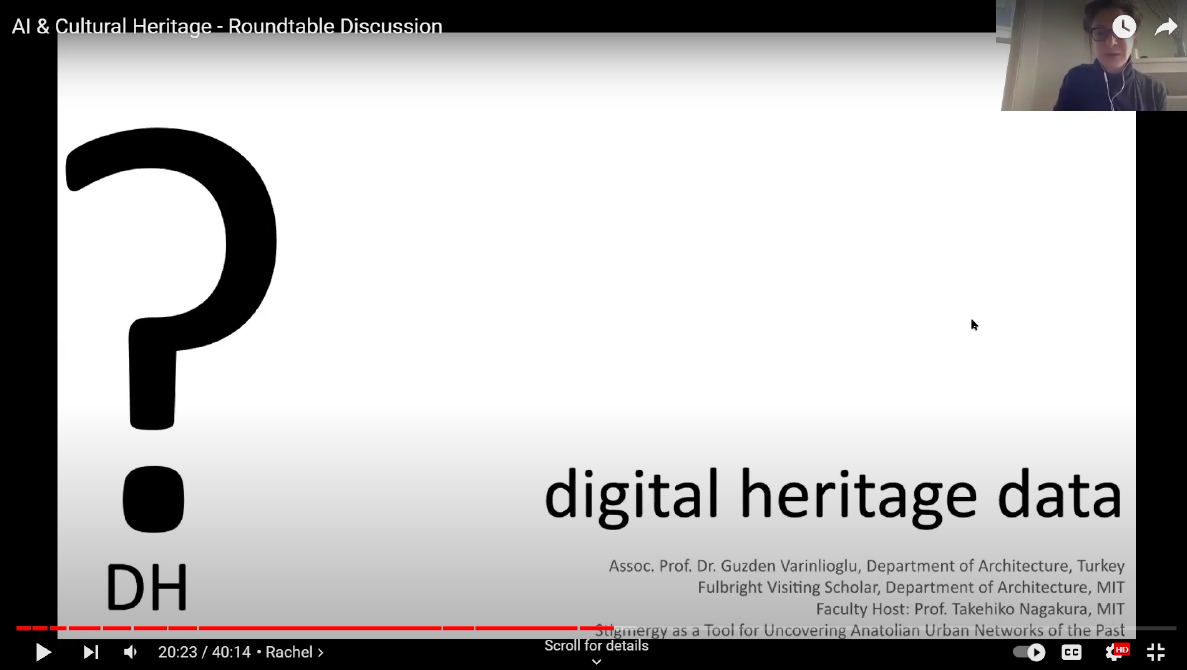1. Leshkevich, Tatiana, and Anna Motozhanets. “Social Perception of Artificial Intelligence and Digitization of Cultural Heritage: Russian Context.” Applied Sciences, vol. 12, no. 2712, 2022, pp. 1-12. https://doi.org/10.3390/app12052712.
While studying the impact of AI and Digital Humanities on society, it is imperative to understand and analyse how people perceive the use of Artificial Intelligence (AI) and Digital Cultural Heritage. This paper demonstrates the social perception of AI and digital heritage in the Russian context. However, the findings of this paper are not specific to Russia; they are applicable throughout the world, where AI and digital heritage are employed. The significance of the paper lies in underlining how the use of AI impacts the popularisation of cultural heritage. The paper is comprehensive in highlighting both the positive and negative perceptions of AI and digital heritage. It provides “a theoretical and reflexive analysis of both positive and negative consequences” (Leshkevich and Motozhanets 9). It does not gloss over any certain perception towards AI or digital heritage. It thoroughly analyses both AI and digital heritage, which acts as the grounding for the ambivalent perceptions. The paper is openly accessible to everyone, which increases the importance of this paper. Moreover, the paper uses an interdisciplinary approach to studying social perception. Additionally, the paper substantiates the arguments presented with statistical data as well as references from literature and popular science books. The statistical data and the literary references give depth to the paper and help sustain the interest of people in both technical and humanistic fields.
2. Pasikowska-Schnass, Magdalena, and Young-Shin Lim. Artificial intelligence in the context of cultural heritage and museums Complex challenges and new opportunities. European Parliamentary Research Service, May 2023, https://www.europarl.europa.eu/RegData/etudes/BRIE/2023/747120/EPRS_BRI(2023)747120_EN.pdf.
This briefing, published by the European Parliamentary Research Service, is significant for multiple reasons. It is not a research article or a book on the impact of Artificial Intelligence. It is different as it is a briefing that discusses multiple arrays related to AI: from varied views of international organisations on AI, the European Union’s (EU) engagement with AI, to the opportunities and challenges involved in the amalgamation of AI and digital cultural heritage. The briefing uses particular examples of the use of AI in the domain of cultural heritage, for instance, the use of AI in the reconstruction of Notre Dame de Paris cathedral after its destruction by fire. The relevance of the briefing lies in
the fact that the subject of the briefing was once considered a daunting possibility, and now it engages even with domains like cultural heritage. The briefing is significant as it acknowledges the role of the human factor in giving expert input by researchers. One distinct thing that it points out is the expansive impact of AI and, hence, the requirement of an overarching body in charge of AI. This briefing incorporates data to elucidate the fact that the digitalisation of museums and the use of AI substantially increased as a result of lockdowns during the COVID-19 pandemic. Another aspect that makes this paper relevant is that it takes into account the environmental consequences of
digitalisation and the consumption of digitised content and emphasises the need to develop technologies to reduce these consequences. The comprehensive description of the challenges of AI and the opportunities offered by AI to cultural heritage makes it significant.
3. Webinar titled “Dreaming of AI: Perspectives on AI Use in Cultural Heritage”
This is a one-hour-long webinar facilitated by Alex Kron, Nik Honeysett, and Jack Ludden from Balboa Park Online Collaborative with Jeff Steward from Harvard Art Museums. The guest speakers, Jeff, Jack, and Nik, shared their experiences and thoughts on using AI in their work and responded to questions and thoughts from webinar participants during the open discussion. One of the most important takeaways of this webinar was the ubiquitous nature of AI and how it can impact multiple areas of expertise in cultural heritage. The speakers in the webinar discuss the futuristic nature of interpreting cultural heritage and art through Artificial Intelligence (AI). This webinar is relevant for the resource guide because the impact of AI on cultural heritage is discussed by experts in the field of cultural heritage who base their discussion on their lived engagement with AI. A webinar like this highlights the requirement for more such discussions on the impact of AI in the backdrop of tensions over its increasing role in every aspect of life. What is distinctive about this webinar is that it discusses the
requirement of developing AI policies by museums using AI and also looks into the importance of who is making these policies. It also discusses biases in the data provided by AI and the misuse of AI, which led to many artists filing lawsuits because their IPs were stolen.
Moreover, one of the questions by one of the participants makes this webinar distinct, wherein the participant brings in the element of the possibility of a singular reality and links AI to this philosophical discourse. The most important takeaway from this webinar is that some sections of the population might take the data provided by AI vis-a-vis cultural heritage and other domains at its face value and not recognise its limitations.
4. Webinar titled “AI and Cultural Heritage: Roundtable Discussion”
This online discussion is part of a series on AI and its impact on multiple domains. The speaker in this discussion analysed and answered the question, “What are the most significant challenges and/or developments in digital technology in the field of cultural heritage?” This discussion is significant as it incorporates multiple perspectives and experiences and shows the multi-faceted impact of AI on cultural heritage. The multitude of experiences and viewpoints give the viewers a diverse and thorough understanding of the issue. The viewers are walked through the Conservators’ critique of AI, who believe that AI merely uses a reductionist approach. This discussion highlights the need to debunk many of these misconceptions. Moreover, it talks about how AI is still in its infant stage, and hence, a lot of criticism will disappear in a matter of time. One of the highly significant uses of AI that is discussed is the use of AI in reconstructing heritage through photogrammetric tools, destroyed due to wars (in Ukraine, Iraq, etc.). The discussion also highlights how extra hype and overstatement about the capacity of AI leads to irrational fears and, ultimately, disillusionment. One unique analogy used in this discussion is the explanation of the impact of AI through the idea of Thesus’ ship. All of these distinct features of this discussion and the multiplicity of approaches make it significant.
Works Cited
“AI & Cultural Heritage – Roundtable Discussion.” YouTube, uploaded by Loughborough University IAS, 1 Apr. 2022,
www.youtube.com/watch?v=ROXVJ-TUhTA&list=PLbjgb-2WpoZ1fWAXk3ArkRpM-_DIZTflG&index=10.
“Dreaming of AI: Perspectives on AI Use in Cultural Heritage.” YouTube, uploaded by Balboa Park Online Collaborative, 2 Aug. 2023, www.youtube.com/watch?v=OOJN-PSYC_0.
Leshkevich, Tatiana, and Anna Motozhanets. “Social Perception of Artificial Intelligence and Digitization of Cultural Heritage: Russian Context.” Applied Sciences, vol. 12, no. 2712, 2022, pp. 1-12. https://doi.org/10.3390/app12052712.
Pasikowska-Schnass, Magdalena, and Young-Shin Lim. Artificial intelligence in the context of cultural heritage and museums: Complex challenges and new opportunities. European Parliamentary Research Service, May 2023, https://www.europarl.europa.eu/RegData/etudes/BRIE/2023/747120/EPRS_BRI(2023)74
7120_EN.pdf.





Recent Comments